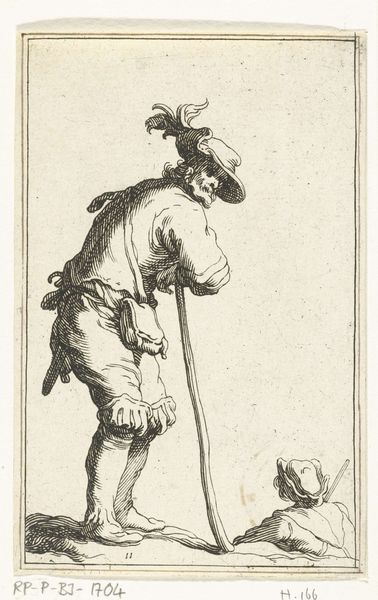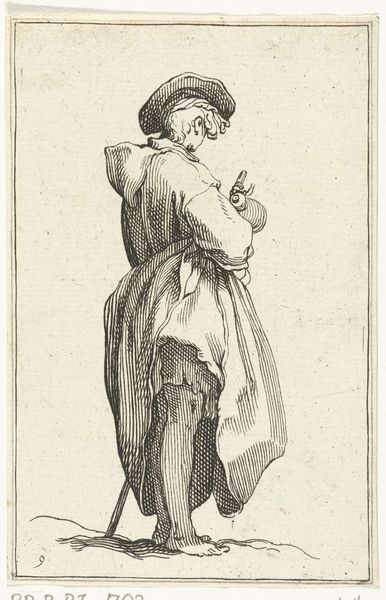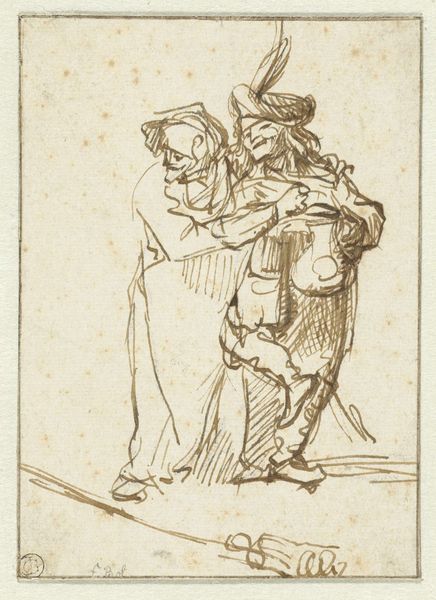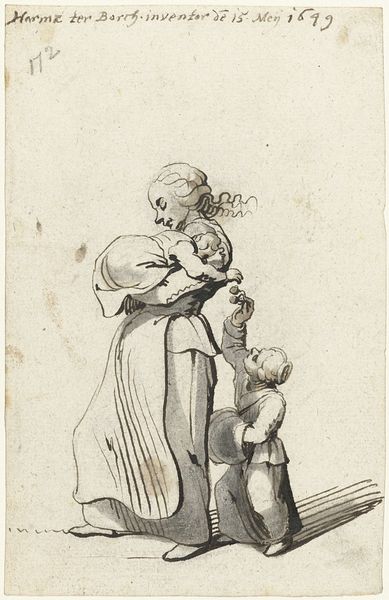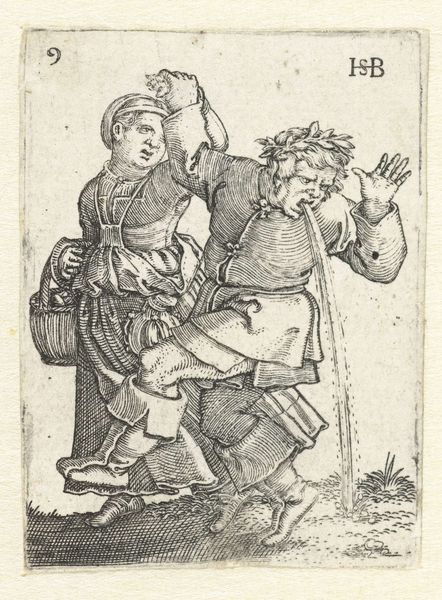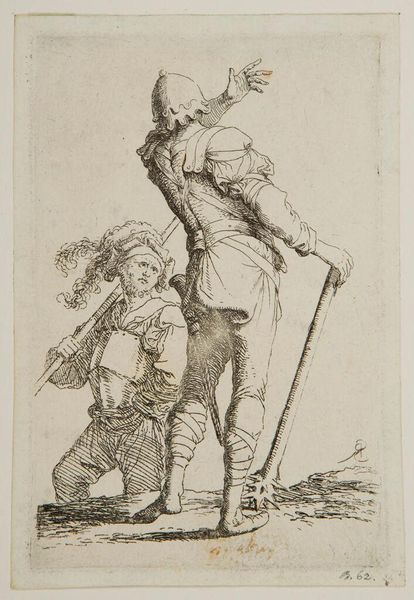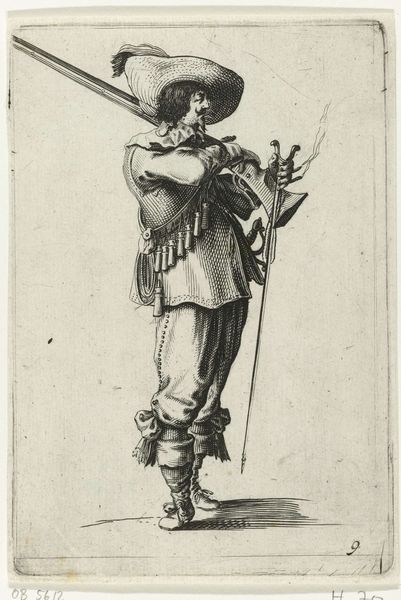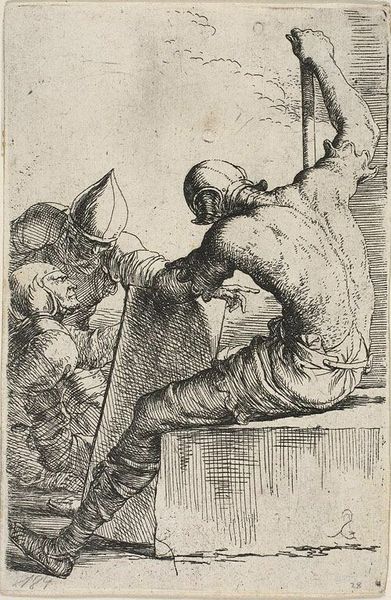
drawing, print, engraving
#
portrait
#
drawing
# print
#
figuration
#
soldier
#
pen-ink sketch
#
line
#
history-painting
#
engraving
Dimensions: height 120 mm, width 80 mm
Copyright: Rijks Museum: Open Domain
Curator: Welcome. Here in the Rijksmuseum we have Frederick Bloemaert's engraving, "Soldaat," created after 1635. Editor: My first impression is the confidence, the posture suggests a bold statement. There is such fine linework capturing light and texture. How was this created? Curator: Bloemaert was a skilled printmaker, part of a larger family of artists in Utrecht. He most likely used a metal plate, meticulously incising lines to create the image we see before us, one that circulated among collectors and other artists. It captures not just the image, but a moment in European social change as it transitioned to more modern war practices. Editor: Indeed, note the detail given to his clothing, particularly around the waist. You can see the way those pouches are rendered in all of its physicality; the wear from consistent use tells stories. Curator: You are absolutely right! Such attire reflects a growing professionalization of soldiers at this time. What seems almost like fashion statements served strategic functions that could save a life or cost another life in warfare. Editor: Yes, and let us also look at the staff in his raised hand: it is both a support, yet an instrument that reflects one's rank. Note also that the angle it creates directs the eyes upward. But why raise it like that? Curator: Good point. He seems less engaged in active combat and more like he is on display. So it would have communicated power, but more importantly allegiance and availability for the patrons that viewed such works. The print could thus communicate potential military relationships, shaping societal impressions of power and patronage through images like this. Editor: So the act of making an image of military personnel already implies social power. Interesting. I now think of what each engraved line physically meant for labor. The artist chose what to depict and circulate. Curator: Exactly. Seeing this work deepens our comprehension of artistic production, distribution, and societal perception in 17th-century Europe. Editor: For me, reflecting on materials helps contextualize history, particularly those not traditionally accounted for in its study. Curator: Yes, seeing “Soldaat” today opens our eyes to the social history and the very tangible means of how such images shaped societal attitudes.
Comments
No comments
Be the first to comment and join the conversation on the ultimate creative platform.
